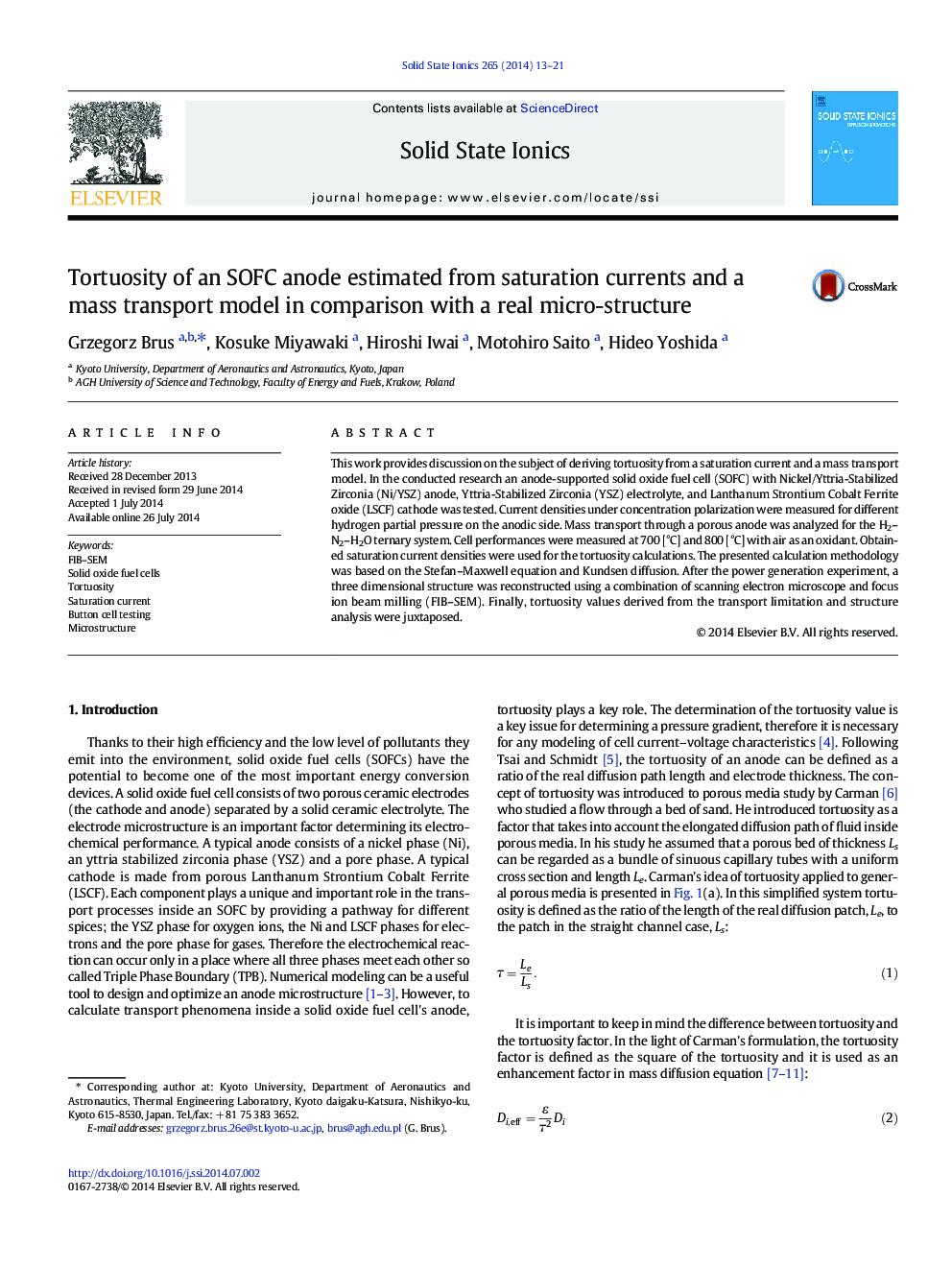| Article ID | Journal | Published Year | Pages | File Type |
|---|---|---|---|---|
| 1293788 | Solid State Ionics | 2014 | 9 Pages |
•Tortuosity was derived from saturation currents and mass transport model.•3D microstructure of SOFC porous anode was directly observed by FIB–SEM.•Microstructure parameters characterising the anode were quantified.•Random walk diffusion simulation was employed to quantify tortuosity factor.•Tortuosities obtain from FIB‐SEM analysis and mass transport model were compared.
This work provides discussion on the subject of deriving tortuosity from a saturation current and a mass transport model. In the conducted research an anode-supported solid oxide fuel cell (SOFC) with Nickel/Yttria-Stabilized Zirconia (Ni/YSZ) anode, Yttria-Stabilized Zirconia (YSZ) electrolyte, and Lanthanum Strontium Cobalt Ferrite oxide (LSCF) cathode was tested. Current densities under concentration polarization were measured for different hydrogen partial pressure on the anodic side. Mass transport through a porous anode was analyzed for the H2–N2–H2O ternary system. Cell performances were measured at 700 [°C] and 800 [°C] with air as an oxidant. Obtained saturation current densities were used for the tortuosity calculations. The presented calculation methodology was based on the Stefan–Maxwell equation and Kundsen diffusion. After the power generation experiment, a three dimensional structure was reconstructed using a combination of scanning electron microscope and focus ion beam milling (FIB–SEM). Finally, tortuosity values derived from the transport limitation and structure analysis were juxtaposed.
